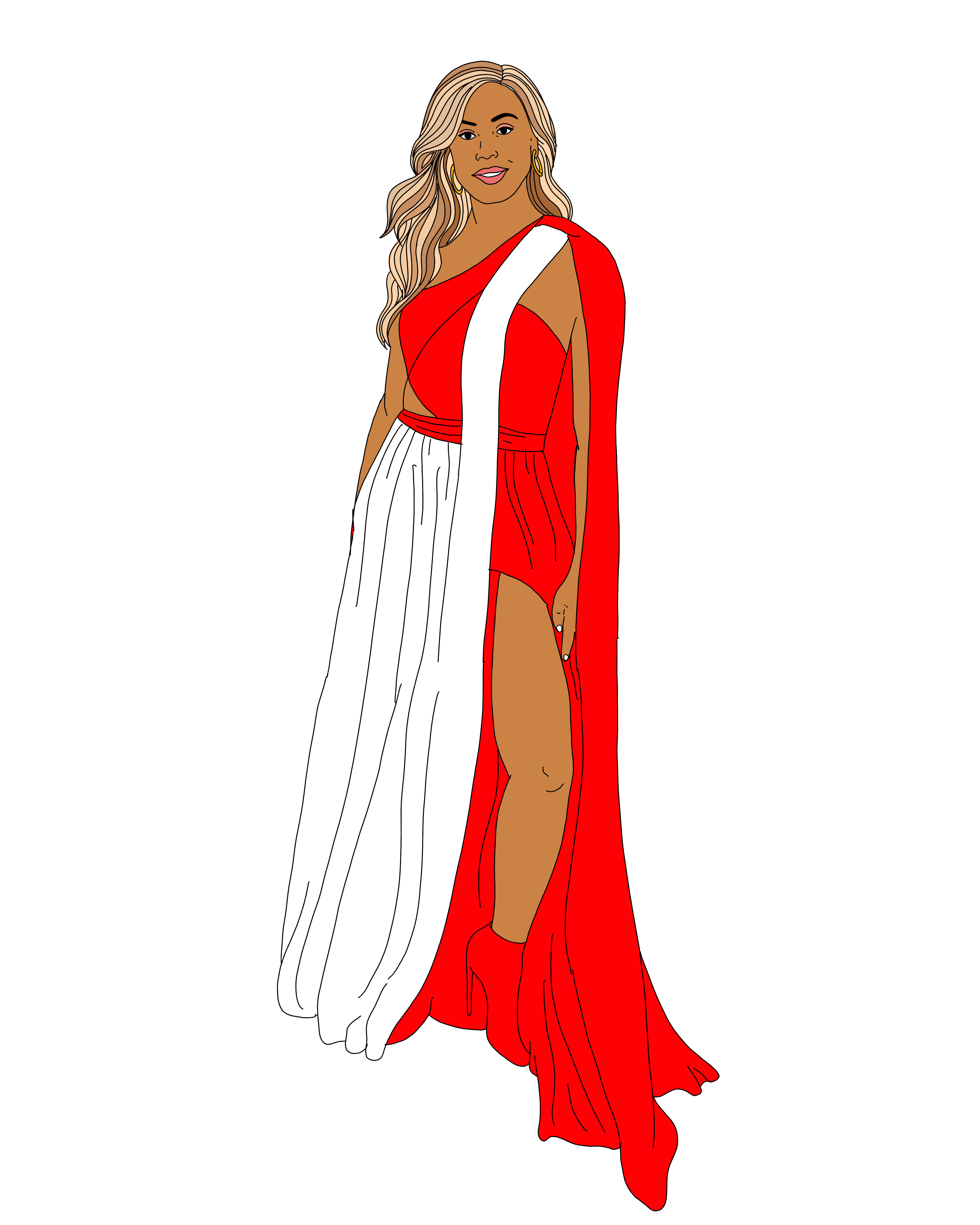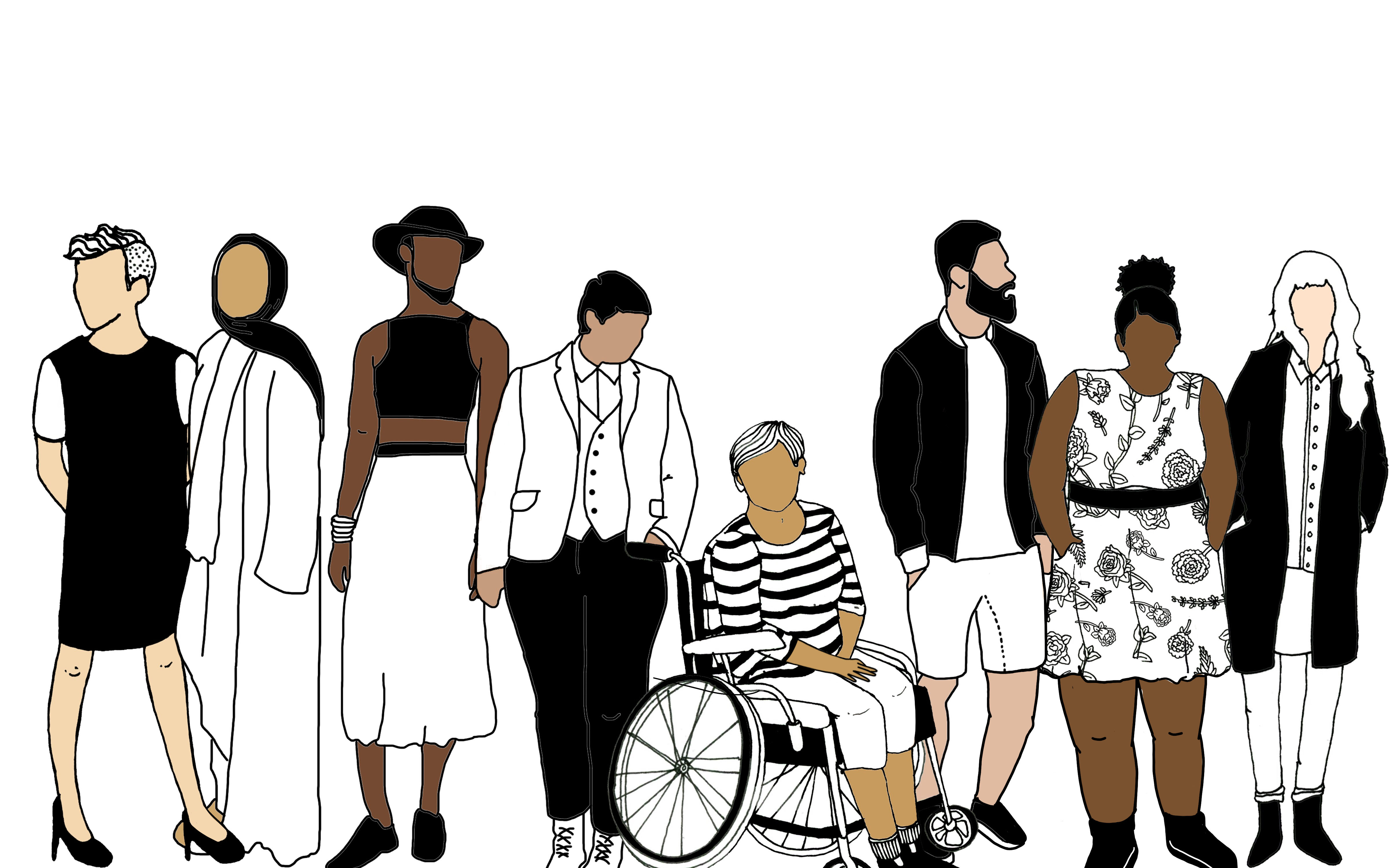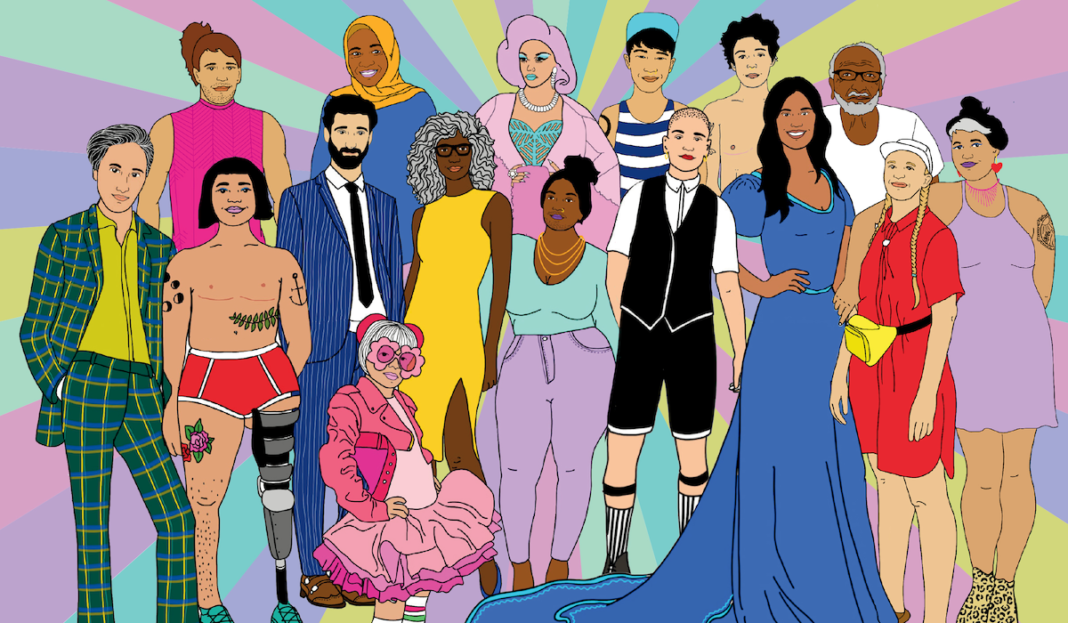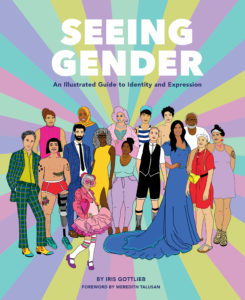 Seeing Gender
Seeing Gender
Written & Illustrated by: Iris Gottlieb
Publisher: Chronicle Books
Seeing Gender by Iris Gottlieb isn’t just a survey of the basics of gender in the United States, it’s also a very personal story for its creator. By looking at the way that gender works from a variety of perspectives, Seeing Gender creates a tapestry that seeks to facilitate a conversation about gender that moves beyond the surface.
The book is divided into three sections. The first, “A Good Place to Start,” offers the basic foundations of the concepts that will be explored in the book. The second, “Digging Deep,” moves beyond the basics to investigate why. The third, “My Story,” offers insight into why Iris felt compelled to write the book to begin with and includes several entries from Iris’s top surgery recovery journal.

The opening section of the book covers various key terms and fundamental ideas surrounding gender in as approachable a package as possible (a two-page spread even features an illustration of an open dictionary to make the four columns of terminology contained within seem less intimidating). This section includes entries on what pronouns are and why they matter, as well as an entry that navigates the relationship between sexuality, sexual orientation, and gender identity.
The second section endeavors to both better understand both the underlying foundations of gender, as well to illuminate how gender affects so much of our understanding of the world at large. To this end, the effect that gender has on a variety of subjects is examined, from global warming to the public perception of Black men. Meanwhile, other sections examine the processes that lead to the implementation of gender as we know it, highlighting such topics as the patriarchy and White feminism, and exposing how colonialism is responsible for imposing and maintaining the gender binary.
The first two sections are tied together thanks to a few repeated themes. One aims to demonstrate the diversity of sex in the natural world, and covers topics ranging from the reproductive biology of slugs to a pride of lions in Botswana’s Okavango Delta that includes lionesses with manes that are known to engage in “male mating behavior.” Another repeated theme is a spotlight section, highlighting the achievements of individuals who have contributed to the conversation on gender, including Coco Chanel, Frida Kahlo, and Laverne Cox.

While the second section does serve to further explore the basic topics brought up in the first section, it is not necessary to read the book from cover to cover. It can be picked up and paged through, and when a particular illustration catches your attention, that entry can in most instances be read and understood independently.
Many of the entries include anecdotes or fun facts about the specific topic in question (for example, one entry describes the strange journey of Rosie the Riveter from obscure factory propaganda to ubiquitous feminist icon). Another highlight is a section in which the author surveyed various people regarding their respective genders, which leads to such memorable responses as the one given by Sequoyah, age six: “I’m both of the famous genders: boys and girls.”
The illustrations are generally simple and frequently symbolic, along with portraits of the famous individuals discussed in the spotlight sections. Some of the best illustrations serve to introduce the reader to the diversity of gender appearances that are present in the world. Examples include the pages that depict a group of eight non-binary people to demonstrate the diversity of their clothing choices, or the picture of Will, a trans man who elected not to have top surgery, without his shirt on. While reading about gender and its many manifestations is one thing, actually seeing these people can be an invaluable experience, especially for those who might find themselves in a place or community where they might not otherwise witness those who do not fall within more “traditional” gendered boundaries.

It’s for a similar reason that the third section, which focuses on the author’s personal journey, is so important. This section not only explains the inspiration behind the book (spoiler: it involves Harry Styles), it also includes photographs of the author during her recovery from top surgery. Considering the fact that surgery to correct gender dysphoria is still seldom discussed, including these journal entries and photos that document the author’s recovery process is an invaluable step in demystifying these essential medical procedures.
The third section is the shortest section of the book, and while sections one and two adequately cover their respective topics, the third seems as though it could have been a bit longer. While much of the author’s personality is present throughout the book, including through the specific topics included in the previous two sections, the reader will be left wanting to read more about the author’s personal journey. Perhaps in a future book!
The ideal target audience for this book is likely to be those who have a family member who is not cis, and wish to educate themselves about gender. Another ideal reader would be those who might be questioning their gender identity and be interested in a primer concerning the topic. However, anyone who is interested in taking part in the conversation surrounding gender will find this book helpful, and the appendix containing multiple resources and websites for further reading will provide a jumping-off point for further investigation on the topic.








